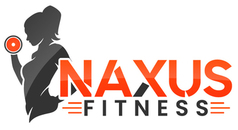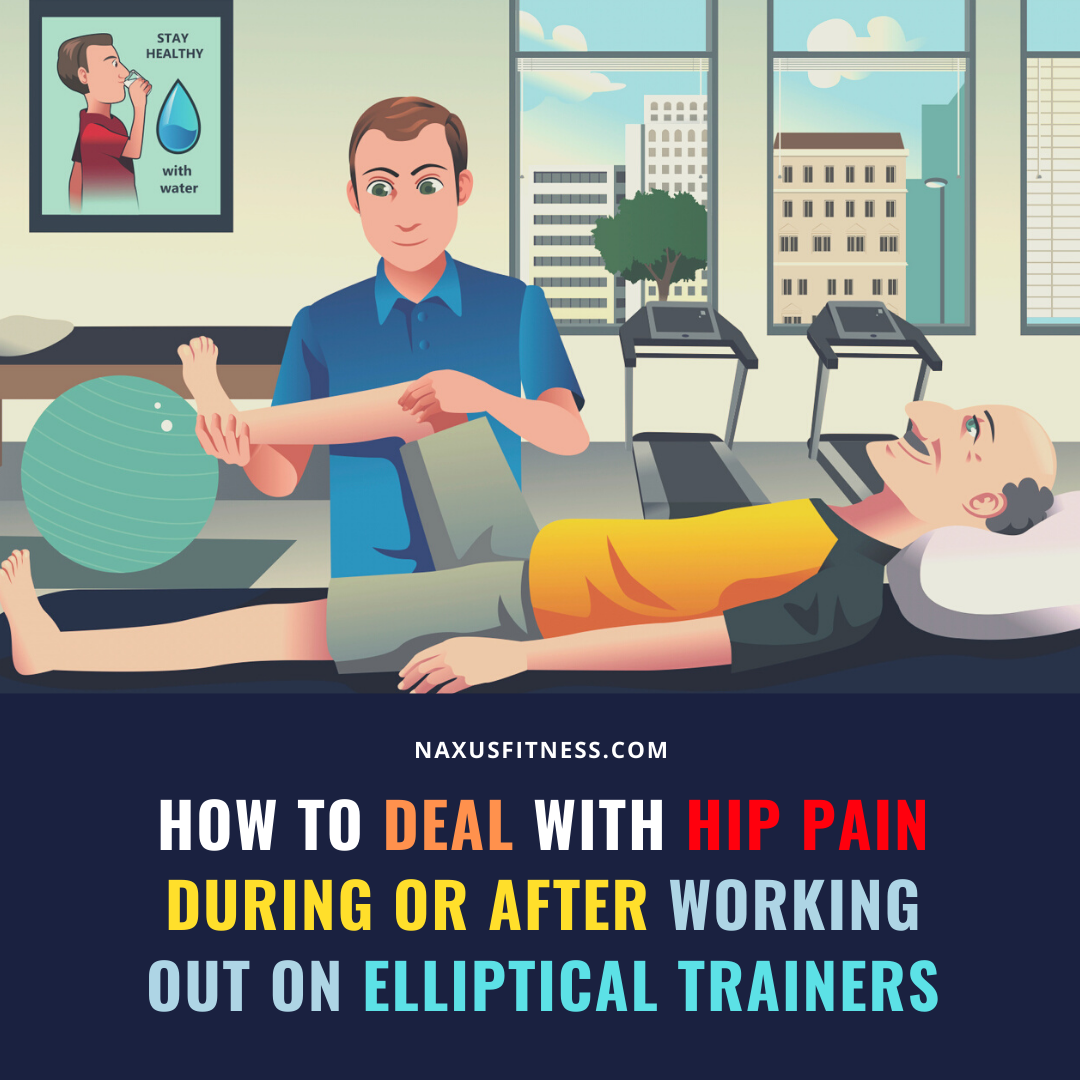How to Deal with hip pain on elliptical trainers
How to deal with hip pain caused by using elliptical machines
Although an elliptical offers a low-impact workout designed for use by people who are restricted by shock movements, you may still experience hip pain after using this type of equipment. Whether this is due to slight differences between elliptical models, improper use of the equipment, or a change in the user’s height, you can usually make certain adjustments to resolve this problem.
Is it good or bad to use an elliptical machine when you have hip pain? In general yes and it depends on the cause of your hip pain. Often the elliptical trainer is a way to develop the cardiorespiratory system and burn calories without impacting your back and hip. In other cases, you may feel that standing up increases the discomfort in your lower back and therefore increases the pain. So before starting any physical exercise and if you have any known pain, it is best to consult your doctor or health care professional. He or she can check you out and inform you about the possibility of riding an elliptical trainer without endangering your back.
Contents
This study compared the different levels of discomfort between an elliptical trainer and an arc trainer. The study concluded that the perceived hip pain on the elliptical was greater than of using the ark trainer
What are the consequences of hip pain?
Because of their repercussions on walking, these pains are quickly disabling. They can interfere with daily activities and should be treated as quickly as possible.
Are there other causes for hip pain?
Pain similar to osteoarthritis can be caused by other diseases in the joint area as well as by problems of neighboring body regions radiating into the hip. A detailed questioning and examination by the doctor is necessary to identify possible causes. In the following, only the most important disorders that can feign hip arthrosis are listed.
Sedentary
A sedentary lifestyle is a risk factor for developing back pain. So we have to get moving! When you sit for long periods of time, your spine is not sufficiently supplied with blood and nutrients. Aerobic exercise helps to deliver nutrients to the structures of the spine. The elliptical trainer is an aerobic exercise.
The Pain can hide an injury
Some lesions can go unnoticed and become disabling. This is particularly the case with hip conflict. Common in young people, it results from a shock between the head of the femur and the joint cavity, caused by wide movements in flexion (martial arts, football, dance, rugby). The pain, located in the groin, is revived when the hip is turned inward.
Despite its frequency in sportsmen and women, it remains little known and insufficiently treated. This is not without consequence, since it evolves towards osteoarthritis in the absence of treatment. On the other hand, an early diagnosis makes it possible to intervene and prevent its aggravation. A surgical procedure may be necessary to avoid the appearance of osteoarthritis.
When to avoid using an elliptical trainer?
Spinal flexion
Watch out for the type of back pain you have! If your pain comes from a herniated disc, the elliptical trainer can NOT be recommended. On the machine, you are leaning forward more than when you walk (yes, otherwise you’d look silly…). This forward bending is likely to aggravate the herniated disc and will eventually cause more pain. Also, when you do elliptical, your arms follow the movement of the handles (unless you are the Elastic Man, one of the 4 fantastic ones). This creates a slight twist in your spine. When the twisting of the spine occurs while you are slightly bent forward, you may increase your risk of disc degeneration. So run away!
Osteoporosis
If your back pain problem is due to a lack of bone density (osteoporosis) in your pelvis and spine, there are more effective cardio-respiratory training exercises that will help you rebuild your bones.
While the lack of impact when working out with the elliptical trainer may be good for some, for others the lack of impact means that workouts do not provide the kind of tension needed for bone growth. In short, the increase in bone density is induced by the impacts on the body. Walking is a more appropriate activity to stimulate bone growth and thus reduce back pain.
Osteoarthritis of the hip: the need to move
In case of osteoarthritis of the hip, it is necessary to practice an activity. Indeed, to fight effectively against osteoarthritis, practicing a gentle activity that takes into account your abilities will help to relieve your pain. Moving around is beneficial since it promotes good cartilage vascularization, maintains the mobility of the hip joint and strengthens the periarticular muscles (which surround the joint). These elements result in a reduced risk of falling and, more generally, in an improved quality of life. This is especially true since physical activity allows you to lose weight and therefore to put less pressure on the hip, which is a weight-bearing joint.
Elliptical Benefits: Reduced impact on the body
Ellipticals have many benefits, since the feet remain “glued” to the pedals, there is no impact on the body when you are exercising or training. Sports activities such as jogging cause an impact on the ground that reverberates throughout your body. When your feet touch the ground, the load is transferred continuously to your ankle, knee, hip and back, not to mention your joints. Those who suffer in the spine may feel an increase in pain on impact. The advantage of the elliptical is that it does not create impact and therefore compression on the spine during a training exercise.
How to relieve pain when working out on elliptical machines?
If you still want to continue working out on your ellitpical trainer with minimum pain, getting a hip brace might offer a solution. These strong, highly elastic, breathable and lightweight neoprene blend materials offer strong, calm and comfortable grip while you workout. They will effectively relieve pain offering protection and support to all the joints on your hip.
What are the solutions for hip pain?
Obviously, it all depends on the causes.
In the case of osteoarthritis, analgesic treatments based on paracetamol (acetaminophen) are recommended during attacks. It is important to continue with gentle physical activities, such as walking, aqua gym, stretching, etc. They help maintain mobility and strengthen the muscles in the area. Physiotherapy or physiotherapy exercises can help mobilize the joint without injuring it. If the joint is too badly damaged, surgery to replace the joint with a prosthesis can be performed. In the case of inflammatory rheumatism, medications such as corticosteroids, methotrexate or sulfasalazine will be prescribed. Finally, if the pain is caused by injury or shock, rest and rehabilitation sessions may be required.
Stretching and strengthening exercises strengthen the hip muscles and can prevent hip pain or accelerate the healing of existing hip joint diseases. To achieve an effect, you should do the exercises about two to three times a week. However, you should not train into the pain. With acute pain, the focus is on protecting the hip joint.
This exercise serves to warm up the hip muscles at the beginning of the training unit. To do this, lie on your back so that the entire spine is in contact with the floor. Lift your legs from the floor at an angle and imitate the movement of cycling.
This exercise stretches the flexor muscles of the hip. Walk with straight upper body in step position (left back, right front). The knee of the back leg is stretched, the front leg is slightly bent. Now shift the center of gravity to the front leg and push the pelvis forward. You should feel the stretch in the groin of the back leg. Now raise your left arm and tilt your upper body to the opposite side. Hold the stretch for about 20 seconds and then change sides.
The exercise serves to strengthen the hip flexor muscles. Walk with straight upper body in the crotch position. The back leg and the opposite arm are stretched. The supporting leg and the opposite arm are bent. Now push the rear leg forward strongly while changing arms at the same time, so that the leg bends. Repeat the exercise about 15 times with each leg.
Cross the leg to be stretched behind the supporting leg. Stretch your equilateral arm over your head, tilt the spine to the side and push the pelvis to the side of the leg to be stretched. Hold the position on each side for about 20 seconds. The exercise stretches the Iliotibial tract, a structure in the fascia of the outer side of the thigh.
This exercise stretches the abductors in the hip joint. Stand with both legs hip-wide. A towel is placed under the foot to be moved. While pushing the foot outwards, keep the other leg slightly bent. Then move the foot back again and repeat the movement with each leg about 15 times.
The hip is a complex and fragile area of the body. The slightest wrong movement can cause hi+ pain or increase the pain already present. So depending on the problem associated with your hip pain, the elliptical trainer may or may not be a safe option for you to exercise. Since elliptical trainers can be dangerous for back or hip problems, it is important to get your doctor’s opinion on your health. And I insist again and again, especially if you are an average level of fitness or have never used an elliptical before!
When it comes to treatment, corrective exercises can be used in accordance with conventional medicine. An elliptical machine can be used as part of a treatment plan. Other cardio-respiratory exercises may be recommended for those with lower back pain such as swimming or walking.







